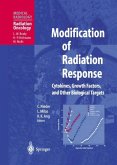Since the publication of the first edition of Radiotherapy of Intraocular and Orbital Tumors in 1993 the treatment programs for cure have changed from the dominance of surgical resection to the utilization of radiation therapy with preservation of the eye intact and preservation of vision. In 2002 about 2,300 primary eye tumors will be diagnosed in the United states, 75% of which will be choroidal melanomas, 20% retinoblastomas, and the remainder a wide variety of tumors - malignant lymphoma, rhabdomyosarcomas, liposarcomas, meningiomas, malignant fibrous histiocytomas, etc. Even so, the majority of malignant tumors of the eye are metastatic, primarily from cancers of the lung or breast. The impact of newer imaging studies, including computed tomography, magnetic resonance imaging, and ultrasound with and without contrast medium, have allowed for better tumor definition, more precise treatment techniques, and major improvement in local control, with preservation of the eye intactand excellent survival. The better histologic definition of the tumor has selected more appropriately the cases suitable for adjuvant chemotherapy particularly demonstrated by the combined integrated multimodal treatment of rhabdomyosarcoma without enucleation. Surgical techniques are now being reserved for biopsy and for treatment failures, a dramatic change in treatment approaches since 1993. The second edition by Sagerman and Alberti clearly demonstrates this major change in treatment. The volume explores the impact of diagnostic workup, the role of surgery, the role of external beam radiation therapy, the use of radioactive plaques, photocoagulation, cryotherapy, and other less major surgical procedures.
From the reviews of the second edition:
"Ocular and orbital tumours remain a large challenge to ophthalmic and clinical oncologists, having unique features in their management, which contrast with tumours in other sites. This second edition of Sagerman and Alberti's book is welcome. ... All in all this book is essential for the libraries of departments treating ocular or orbital tumours and I recommend it ... . this is a high quality reference tome with excellent illustrations and well-referenced." (Dr. P N Plowman, Eye News, Vol. 11 (1), 2004)
"Sagerman and Alberti present the second edition on radiotherapy of intraocular and orbital tumors. ... the book is especially dedicated to the medical community involved in the treatment of ocular tumors, with a special focus on radiotherapy. ... the editors have succeeded in providing significantly improved information and updates in the treatment modalities of the therapy." (T.J. Vogl, European Radiology, Vol. 13 (6), 2003)
"This book aims to provide a comprehensive reference text, addressing all aspects of the treatment of orbital and intraocular tumours by radiation therapy with reviews provided by a panel of American and European experts. The nearly 300 pages of text are complemented by 286 separate easily interpreted illustrations and 49 tables. Chapters are well laid out and organised in a clear and logical manner. ... Overall, this is an easily accessible and comprehensive reference textbook ... ." (Dr. Joe O'Sullivan, RAD Magazine, April, 2003)
"Ocular and orbital tumours remain a large challenge to ophthalmic and clinical oncologists, having unique features in their management, which contrast with tumours in other sites. This second edition of Sagerman and Alberti's book is welcome. ... All in all this book is essential for the libraries of departments treating ocular or orbital tumours and I recommend it ... . this is a high quality reference tome with excellent illustrations and well-referenced." (Dr. P N Plowman, Eye News, Vol. 11 (1), 2004)
"Sagerman and Alberti present the second edition on radiotherapy of intraocular and orbital tumors. ... the book is especially dedicated to the medical community involved in the treatment of ocular tumors, with a special focus on radiotherapy. ... the editors have succeeded in providing significantly improved information and updates in the treatment modalities of the therapy." (T.J. Vogl, European Radiology, Vol. 13 (6), 2003)
"This book aims to provide a comprehensive reference text, addressing all aspects of the treatment of orbital and intraocular tumours by radiation therapy with reviews provided by a panel of American and European experts. The nearly 300 pages of text are complemented by 286 separate easily interpreted illustrations and 49 tables. Chapters are well laid out and organised in a clear and logical manner. ... Overall, this is an easily accessible and comprehensive reference textbook ... ." (Dr. Joe O'Sullivan, RAD Magazine, April, 2003)








